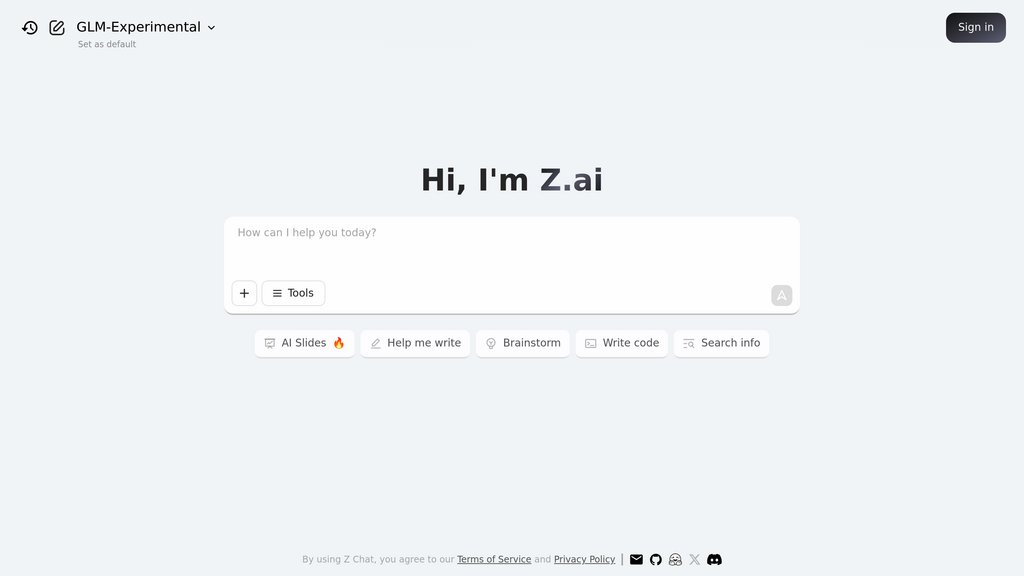Introduction
What is 智谱?
智谱 (Z.ai) is a state-of-the-art artificial intelligence platform that grants users access to a robust suite of open-source large language models, such as the GLM-4, GLM-Z1, and GLM-Z1-Rumination series. It is engineered to master intricate reasoning, sophisticated code creation, and profound research tasks, powered by proprietary models available in parameter sizes from 9B to 32B. The platform's interactive chat interface allows for seamless engagement with these models, delivering rapid inference and exceptional problem-solving prowess. A notable commitment to the open-source community is demonstrated by releasing these models under the permissive MIT License, granting broad freedoms for use, adaptation, and commercial deployment.
Key Features
Open-Source Model Suite: A comprehensive collection of GLM models, featuring base, reasoning, and rumination versions in 9B and 32B configurations, all available under the MIT License for unrestricted commercial application.
Advanced Reasoning Engine: The GLM-Z1 series provides top-tier reasoning abilities, achieving inference speeds of up to 200 tokens per second, further refined through extensive reinforcement learning for handling complex challenges.
Deep Research Capabilities: The GLM-Z1-Rumination model facilitates end-to-end research processes, autonomously generating questions, searching for information, performing analysis, and executing tasks.
Interactive Development Environment: The foundational GLM-4 model includes an Artifacts feature for a dynamic coding experience, equipped with strong code generation and function calling abilities.
Multi-Step Deliberation Process: Rumination models address open-ended questions via prolonged, thoughtful analysis, incorporating integrated search tools and rule-driven reward systems.
Use Cases
Software Development: Programmers can harness the advanced code generation and interactive environment for application development and overcoming programming obstacles.
Research and Analysis: Scholars and analysts can employ the deep research functions to conduct thorough investigations and produce detailed reports.
Complex Problem Solving: Experts can apply the advanced reasoning models to solve demanding mathematical, logical, and multi-dimensional business issues.
Educational Applications: Teachers and learners can use the platform for educational support, homework assistance, and exploring academic topics through conversational interaction.
Content Creation: Writers and creators can utilize the platform's reasoning and research strengths to produce well-informed, high-caliber content.
